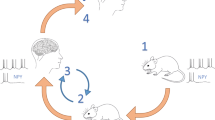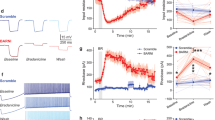Abstract
Epilepsy is a neurological disorder with a prevalence of ≈1% of general population. Available antiepileptic drugs (AEDs) have multiple side effects and are ineffective in 30% of patients. Therefore, development of effective treatment strategies is highly needed, requiring drug-screening models that are relevant and reliable. We investigated novel chemogenetic approach, using DREADDs (designer receptors exclusively activated by designer drugs) as possible inhibitor of epileptiform activity in organotypic hippocampal slice cultures (OHSCs). The OHSCs are characterized by increased overall excitability and closely resemble features of human epileptic tissue. Studies suggest that chemically induced epileptiform activity in rat OHSCs is pharmacoresistant to most of AEDs. However, high-frequency electric stimulus train-induced bursting (STIB) in OHSCs is responsive to carbamazepine and phenytoin. We investigated whether inhibitory DREADD, hM4Di, would be effective in suppressing STIB in OHSC. hM4Di is a mutated muscarinic receptor selectively activated by otherwise inert clozapine-N-oxide, which leads to hyperpolarization in neurons. We demonstrated that this hyperpolarization effectively suppresses STIB in mouse OHSCs. As we also found that STIB in mouse OHSCs is resistant to common AED, valproic acid, collectively our findings suggest that DREADD-based strategy may be effective in suppressing epileptiform activity in a pharamcoresitant epileptic brain tissue.
This is a preview of subscription content, access via your institution
Access options
Subscribe to this journal
Receive 12 print issues and online access
$259.00 per year
only $21.58 per issue
Buy this article
- Purchase on Springer Link
- Instant access to full article PDF
Prices may be subject to local taxes which are calculated during checkout





Similar content being viewed by others
References
O'Brien TJ, Ben-Menachem E, Bertram 3rd EH, Collins SD, Kokaia M, Lerche H et al. Proposal for a ‘phase II’ multicenter trial model for preclinical new antiepilepsy therapy development. Epilepsia 2013; 54 (Suppl 4): 70–74.
Albus K, Wahab A, Heinemann U . Standard antiepileptic drugs fail to block epileptiform activity in rat organotypic hippocampal slice cultures. Br J Pharmacol 2008; 154: 709–724.
Galanopoulou AS, Buckmaster PS, Staley KJ, Moshé SL, Perucca E, Engel J Jr et al. Identification of new epilepsy treatments: issues in preclinical methodology. Epilepsia 2012; 53: 571–582.
Schmidt D, Loscher W . Drug resistance in epilepsy: putative neurobiologic and clinical mechanisms. Epilepsia 2005; 46: 858–877.
Jensen FE . Pediatric epilepsy models. Epilepsy Res 2006; 68: 28–31.
McBain CJ, Boden P, Hill RG . Rat hippocampal slices 'in vitro' display spontaneous epileptiform activity following long-term organotypic culture. J Neurosci Methods 1989; 27: 35–49.
Bausch SB, McNamara JO . Contributions of mossy fiber and CA1 pyramidal cell sprouting to dentate granule cell hyperexcitability in kainic acid-treated hippocampal slice cultures. J Neurophysiol 2004; 92: 3582–3595.
Wahab A, Albus K, Heinemann U . Drug refractoriness of epileptiform activity in organotypic hippocampal slice cultures depends on the mode of provocation. Epilepsy Res 2010; 90: 304–308.
Urban DJ, Roth BL . DREADDs (designer receptors exclusively activated by designer drugs): chemogenetic tools with therapeutic utility. Annu Rev Pharmacol Toxicol 2015; 55: 399–417.
Armbruster BN, Li X, Pausch MH, Herlitze S, Roth BL . Evolving the lock to fit the key to create a family of G protein-coupled receptors potently activated by an inert ligand. Proc Natl Acad Sci USA 2007; 104: 5163–5168.
Katzel D, Nicholson E, Schorge S, Walker MC, Kullmann DM . Chemical-genetic attenuation of focal neocortical seizures. Nat Commun 2014; 5: 3847.
Ragsdale DS, Avoli M . Sodium channels as molecular targets for antiepileptic drugs. Brain Res Brain Res Rev 1998; 26: 16–28.
Loscher W . Basic pharmacology of valproate: a review after 35 years of clinical use for the treatment of epilepsy. CNS Drugs 2002; 16: 669–694.
Williamson JM, Lothman EW . The effect of MK-801 on kindled seizures: implications for use and limitations as an antiepileptic drug. Ann Neurol 1989; 26: 85–90.
Avaliani N, Sorensen AT, Ledri M, Bengzon J, Koch P, Brustle O et al. Optogenetics reveal delayed afferent synaptogenesis on grafted human-induced pluripotent stem cell-derived neural progenitors. Stem Cells 2014; 32: 3088–3098.
Tonnesen J, Sorensen AT, Deisseroth K, Lundberg C, Kokaia M . Optogenetic control of epileptiform activity. Proc Natl Acad Sci USA 2009; 106: 12162–12167.
Berglind F, Ledri M, Sørensen AT, Nikitidou L, Melis M, Bielefeld P et al. Optogenetic inhibition of chemically induced hypersynchronized bursting in mice. Neurobiol Dis 2014; 65: 133–141.
Zimmer J, Gahwiler BH . Cellular and connective organization of slice cultures of the rat hippocampus and fascia dentata. J Comp Neurol 1984; 228: 432–446.
Heimrich B, Frotscher M . Differentiation of dentate granule cells in slice cultures of rat hippocampus: a Golgi/electron microscopic study. Brain Res 1991; 538: 263–268.
Zafirov S, Heimrich B, Frotscher M . Dendritic development of dentate granule cells in the absence of their specific extrinsic afferents. J Comp Neurol 1994; 345: 472–480.
Frotscher M, Heimrich B, Deller T, Nitsch R . Understanding the cortex through the hippocampus: lamina-specific connections of the rat hippocampal neurons. J Anat 1995; 187 (Pt 3): 539–545.
Bausch SB, McNamara JO . Synaptic connections from multiple subfields contribute to granule cell hyperexcitability in hippocampal slice cultures. J Neurophysiol 2000; 84: 2918–2932.
Gabriel S, Njunting M, Pomper JK, Merschhemke M, Sanabria ER, Eilers A et al. Stimulus and potassium-induced epileptiform activity in the human dentate gyrus from patients with and without hippocampal sclerosis. J Neurosci 2004; 24: 10416–10430.
Jandova K, Pasler D, Antonio LL, Raue C, Ji S, Njunting M et al. Carbamazepine-resistance in the epileptic dentate gyrus of human hippocampal slices. Brain 2006; 129 (Pt 12): 3290–3306.
Jann MW, Lam YW, Chang WH . Rapid formation of clozapine in guinea-pigs and man following clozapine-N-oxide administration. Arch Int Pharmacodyn Ther 1994; 328: 243–250.
Chen X, Choo H, Huang XP, Yang X, Stone O, Roth BL et al. The first structure-activity relationship studies for designer receptors exclusively activated by designer drugs. ACS Chem Neurosci 2015; 6: 476–484.
Ledri M, Sorensen AT, Madsen MG, Christiansen SH, Ledri LN, Cifra A et al. Differential effect of neuropeptides on excitatory synaptic transmission in human epileptic hippocampus. J Neurosci 2015; 35: 9622–9631.
Sandow N, Kim S, Raue C, Päsler D, Klaft ZJ, Antonio LL et al. Drug resistance in cortical and hippocampal slices from resected tissue of epilepsy patients: no significant impact of p-glycoprotein and multidrug resistance- associated proteins. Front Neurol 2015; 6: 30.
Verwer RW, Hermens WT, Dijkhuizen P, ter Brake O, Baker RE, Salehi A et al. Cells in human postmortem brain tissue slices remain alive for several weeks in culture. FASEB J 2002; 16: 54–60.
Eugene E, Cluzeaud F, Cifuentes-Diaz C, Fricker D, Le Duigou C, Clemenceau S et al. An organotypic brain slice preparation from adult patients with temporal lobe epilepsy. J Neurosci Methods 2014; 235: 234–244.
Rytter A, Cronberg T, Asztely F, Nemali S, Wieloch T . Mouse hippocampal organotypic tissue cultures exposed to in vitro ‘ischemia’ show selective and delayed CA1 damage that is aggravated by glucose. J Cereb Blood Flow Metab 2003; 23: 23–33.
Acknowledgements
This work was supported by grants from (to MK): Swedish Research Council (2012-2258) and EPITARGET: FP7-HEALTH project (602102). We thank A Nøstdal for help with Figure 5 and proofreading the manuscript.
Author contributions
NA designed and performed research, analysed data and wrote the paper; MA designed research; AHR and DW designed research and provided material; MK designed research, wrote the paper and provided funding.
Author information
Authors and Affiliations
Corresponding author
Ethics declarations
Competing interests
The authors declare no conflict of interest.
Rights and permissions
About this article
Cite this article
Avaliani, N., Andersson, M., Runegaard, A. et al. DREADDs suppress seizure-like activity in a mouse model of pharmacoresistant epileptic brain tissue. Gene Ther 23, 760–766 (2016). https://doi.org/10.1038/gt.2016.56
Received:
Accepted:
Published:
Issue Date:
DOI: https://doi.org/10.1038/gt.2016.56
This article is cited by
-
Chemogenetic attenuation of cortical seizures in nonhuman primates
Nature Communications (2023)
-
Chemogenetic Seizure Control with Clozapine and the Novel Ligand JHU37160 Outperforms the Effects of Levetiracetam in the Intrahippocampal Kainic Acid Mouse Model
Neurotherapeutics (2022)
-
Deficiency of autism risk factor ASH1L in prefrontal cortex induces epigenetic aberrations and seizures
Nature Communications (2021)
-
Inhibition of epileptiform activity by neuropeptide Y in brain tissue from drug-resistant temporal lobe epilepsy patients
Scientific Reports (2019)
-
Dynamic interaction of local and transhemispheric networks is necessary for progressive intensification of hippocampal seizures
Scientific Reports (2018)



